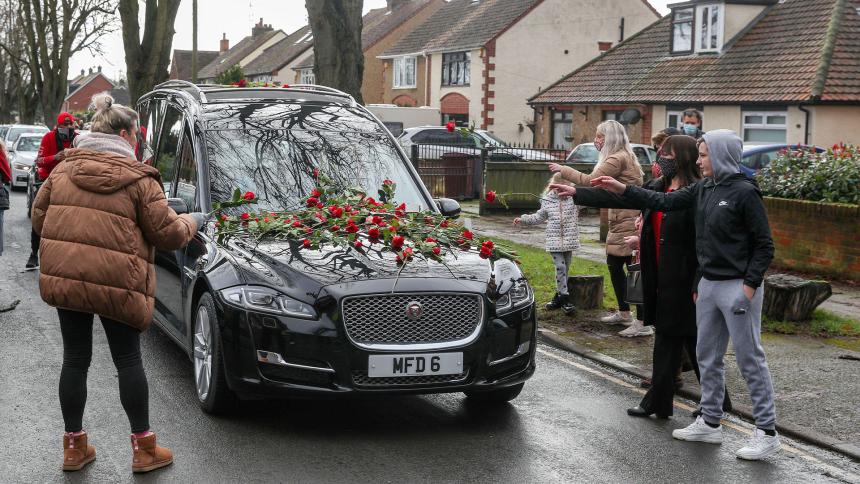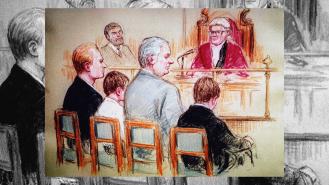
The dark side of social media: What happened to Olly Stephens?
In January 2021, the brutal murder of 13-year-old schoolboy Olly Stephens shocked the nation. Stabbed to death by two teenagers near his home in Reading, his tragic death exposed the dark side of social media and its power to fuel real-life violence.
What began as a typical teenage conflict quickly escalated into a fatal confrontation, leaving a community shattered and searching for answers.
How did this happen? And what role did social media play in this tragedy? This article explores the heartbreaking story of Olly Stephens and the digital forces that contributed to his untimely death.
The significance of Snapchat
The events that led to Olly’s death began on social media app, Snapchat – a site used by younger people. Olly had been involved in an ongoing feud with two of his peers, who would later become his murderers.
According to reports, the two teenagers used social media to share hateful and threatening messages towards Olly. The nature of Snapchat, where messages disappear and are difficult to trace, allowed these interactions to go unchecked, with little to no accountability.
In the days leading up to his death, Olly’s killers communicated on Snapchat. One wrote, 'I actually hate the kid with a passion – if I was to see him right now I’d probably end up killing him'.
The horrific events unfolded after 13-year-old Olly had seen a video posted to the app showing a boy younger than him being humiliated by two older boys. Olly wanted wanted to alert the young boy’s brother and forwarded the video to him. The two suspects accused him of snitching and would later craft a malicious revenge plan.
They recruited a girl, who Olly knew, to lure him to a location where he could then be attacked. Before the ambush, she described any violence against him as 'karma'.
The trap
On the day of the murder, Olly arranged to meet the girl at a field a short distance from his house. He believed he would be meeting her alone, and had no idea of the sinister revenge plan that she was willingly playing a role in.
Shortly after arriving at the location, Olly was ambushed by the two boys. The attack initially began as a fistfight, but quickly escalated further. One of the boys had taken a knife with him. Olly was stabbed twice, receiving fatal injuries, before his two attackers and the girl all fled the scene.
An off-duty nurse who had witnessed the stabbing while walking her dog gave Olly first aid. His parents were quickly alerted to the incident, and arrived to a horrific scene. Paramedics performed CPR on their son for 30 minutes, but his life could not be saved. Olly was dead before he arrived at the hospital.
Following the attack, the two boys attempted to destroy or conceal evidence. They disposed of their bloodstained clothing by throwing it into an overgrown area close to a railway line, and attempted to wipe their phones of incriminating evidence.
A history of violence
According to sources, one of his killers was known amongst children’s services for his violent and dangerous behaviour. A review had been carried out by local safeguarding authorities that cover the Berkshire area, where the heinous crime took place.
The basis of the review was to make recommendations on how the boy’s behaviour could be improved, whether that means better communication between schools and agencies, or harsher policies and procedures. It later emerged that one of the killers had been diagnosed with a developmental delay, Asperger's Syndrome.
What happened next?
Following a trial at Reading Crown Court, the two boys were found guilty of murdering Olly Stephens. The girl, who had played a fundamental role in luring him to the location of the attack, was found guilty of manslaughter.
The boys received sentences with a minimum term of 13 and 12 years respectively, while the girl received five years’ imprisonment.
Since the loss of their son, Olly’s parents have started campaigning for new laws to be introduced to make it harder for harmful content to be shared on social media platforms like Snapchat.
Paying tribute to Olly, his parents described him as 'warm, kind, soulful, a deep thinker and a great carer to those around him. He was loyal and trusted people to a fault. He would never back down from a fight, he would defend those that couldn’t or wouldn’t defend themselves.'











